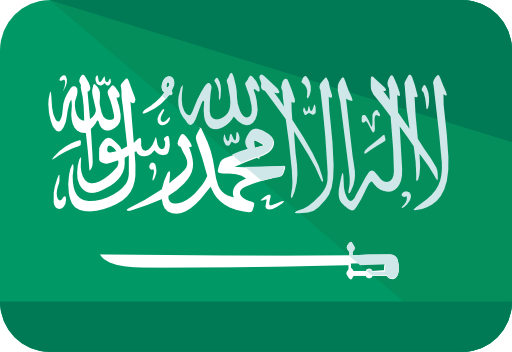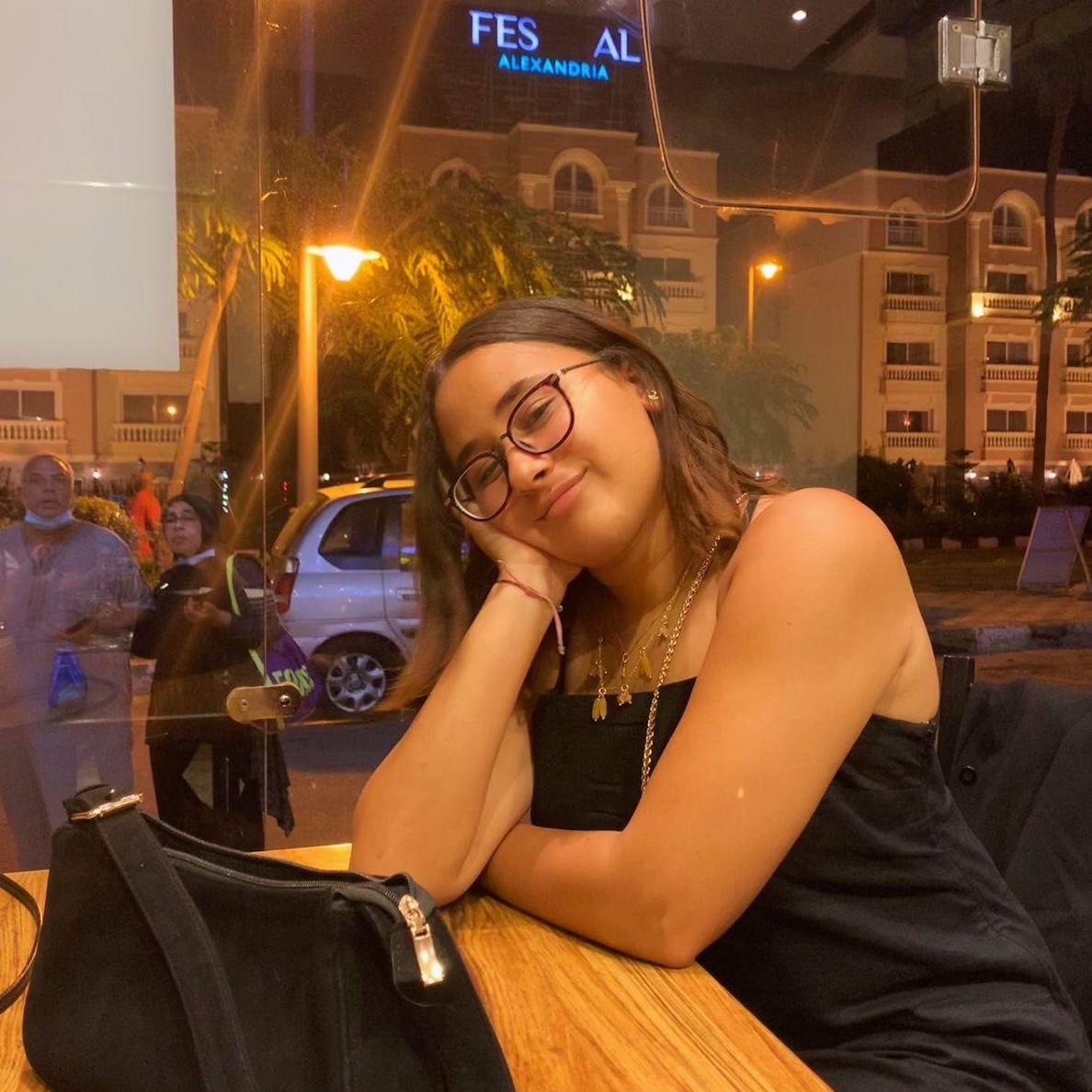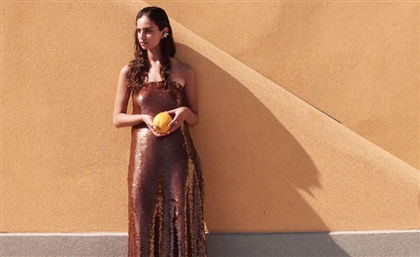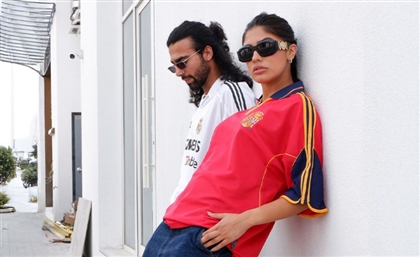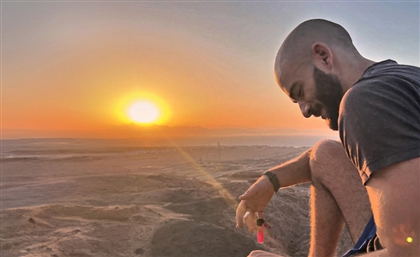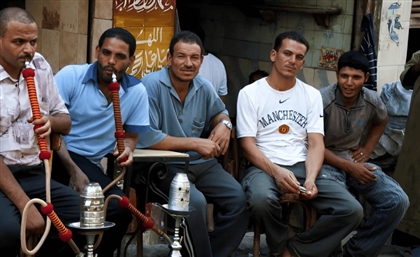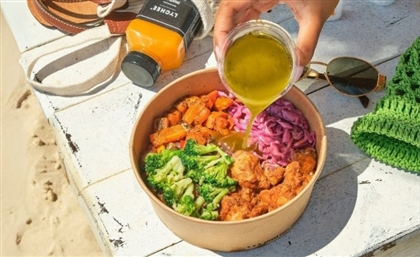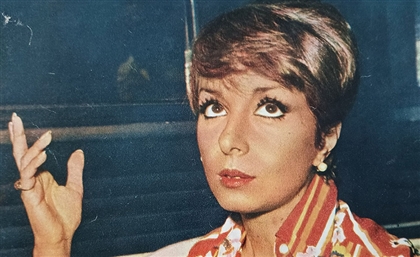Egyptian Label 69-R7r7a Intends to Stay Slow & Locally Rooted
69-R7r7a is an art studio, but that art also happens to be wearable.
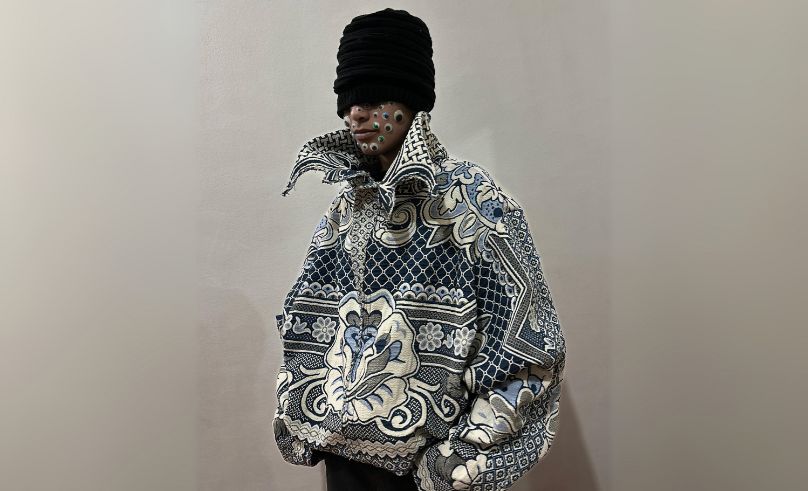
When you go through 69-R7r7a’s online store, you might notice a general sense of lawless nonchalance in their growing portfolio. This impression is not particularly bound by any concrete aspect of their clothing, except for the fact that a good portion of their catalogue assumes a relaxed fit; it’s more in the very philosophy 69-R7r7a embodies. Like, this is the brand that broke the Egyptian corner of the internet with a full-length coat made entirely out of a traditional grandma’s coverlet (more commonly, a ‘coverta’), and didn’t even bat an eye.
Throughout my sinuous conversation with the 69-R7r7a founders, held over a choppy online meeting throughout which Jomana ElBendary and Youssef Gamal traded a phone between them while the other put out business-related fires, I realised the relaxedness of their brand was a reflection of their dynamic. The two founders met at the entrance exam for the Fine Arts program at Helwan University, and despite not immediately developing a friendship, they both developed a deep-rooted respect for each other’s art. At around the same time, Gamal was starting his oversized clothing brand in 2018 (yep, way before the hype) under the name 69-R7r7a, while ElBendary made tie-dye and accessories.-5d3cbf30-f162-47e7-ae7d-16f383a277bd.jpg) Two years after they both shut down their businesses, ElBendary was exploring new artistic fronts, this time of a more musical nature. “I was on the hunt for a specific look that I just couldn’t find anywhere - and we already knew how to make things. So I reached out to Gamal and said, ‘Why don’t we revive and repurpose 69-R7r7a?’” And just like that, 69-R7r7a as we know it - a brand that often revives and repurposes clothing at the end of its life - was itself reborn.
Two years after they both shut down their businesses, ElBendary was exploring new artistic fronts, this time of a more musical nature. “I was on the hunt for a specific look that I just couldn’t find anywhere - and we already knew how to make things. So I reached out to Gamal and said, ‘Why don’t we revive and repurpose 69-R7r7a?’” And just like that, 69-R7r7a as we know it - a brand that often revives and repurposes clothing at the end of its life - was itself reborn.
“When I think of 69-R7r7a, I think of it as less of a label and more of a space where we can create art, and give life to garments and objects that would otherwise be in a landfill,” says Gamal. “That art just made its way, naturally, to fashion.”
The art Gamal refers to is evident in the pieces 69-R7r7a crafts, and it’s wildly unique from anything else on the market. You see, 69-R7r7a doesn’t follow a brand manual, there’s no ‘inspo’ Pinterest board. The brand is adamant on avoiding the common regional brand pitfall of wanting to mimic a collection or general creative direction that’s already in existence somewhere in the West. It’s not an ‘Oh, I wish we had that in Egypt’ situation; it’s entirely novel.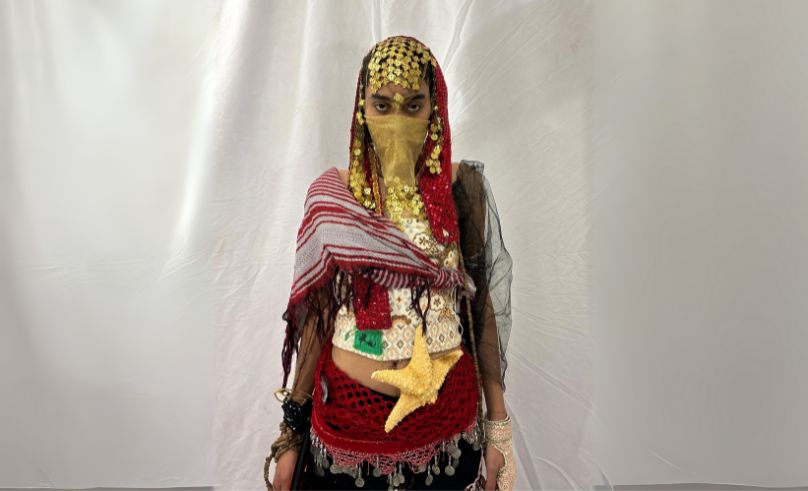 “We refuse to associate with Pinterest at all,” ElBendary tells us. “It stifles our creativity. If you copy someone else’s painting, that doesn’t make you an artist, does it?” 69-R7r7a’s rejection of mood boards as a concept is also rooted in the fact that most of the content they could get inspiration from would be entirely Western; it’s art created from Western inspiration by Western people. It just didn’t reflect them. Instead, 69-R7r7a’s ‘inspo’ board is what they can see in their day-to-day life in Cairo, and what they have seen growing up. That’s how the ‘coverta’ line happened.
“We refuse to associate with Pinterest at all,” ElBendary tells us. “It stifles our creativity. If you copy someone else’s painting, that doesn’t make you an artist, does it?” 69-R7r7a’s rejection of mood boards as a concept is also rooted in the fact that most of the content they could get inspiration from would be entirely Western; it’s art created from Western inspiration by Western people. It just didn’t reflect them. Instead, 69-R7r7a’s ‘inspo’ board is what they can see in their day-to-day life in Cairo, and what they have seen growing up. That’s how the ‘coverta’ line happened.
“We grew up surrounded by coverlets,” Gamal says. “They’re kind of like cultural symbols now. This is a memory we all share. When we restarted 69-R7r7a, we honestly felt like they provoked us to do something with them, so I borrowed one from my mum to experiment with.” Gamal believes that the mundane familiarity of the coverlet, the way our eyes are used to seeing it, is what made it such an insistent project. His mum was not happy to lose her coverlet.
The ‘coverta’ coat, like the rest of the 69-R7r7a catalogue, was made by hand. Everything from the sewing pattern to the lining to the finishing is made by ElBendary and Gamal in their studio. In fact, when they first started out, they didn’t even have a sewing machine, their pieces were entirely hand-sewn. Now, they use Gamal’s grandmother’s sewing machine. In Gamal’s words, “The only thing made in a factory is the clothing tags, and we attach them to our pieces by hand.”-8d9fa960-7b79-4673-afd2-12d2bd54b390.jpg) 69-R7r7a intends to maintain its slow production process; it’s an integral aspect of the brand’s identity, it allows them to think extensively about each individual piece they put out. Every stitch, every fabric choice is completely intentional. The very fact that ElBendary and Gamal design the patterns themselves ensures that these are clothes made to fit Egyptian bodies, instead of a mannequin modelled to the silhouette of a Western figure.
69-R7r7a intends to maintain its slow production process; it’s an integral aspect of the brand’s identity, it allows them to think extensively about each individual piece they put out. Every stitch, every fabric choice is completely intentional. The very fact that ElBendary and Gamal design the patterns themselves ensures that these are clothes made to fit Egyptian bodies, instead of a mannequin modelled to the silhouette of a Western figure.
Besides, 69-R7r7a became what it is today thanks to a fierce rejection of the mass production of clothing. “We believe that the clothes you wear not only reflect your identity. They also shape it. It’s slow, minute change, but it accumulates over time. Who would want their identity to be mass-produced?”
Because every 69-R7r7a piece is an entire artistic endeavour on its own, the founders view them as heirlooms. “We create our pieces to be immortal. We want them to be passed down through generations, the way a valuable tapestry or painting is kept in the family. They’re wearable art.”
Trending This Week
-
Jul 24, 2025
-
Jul 24, 2025


